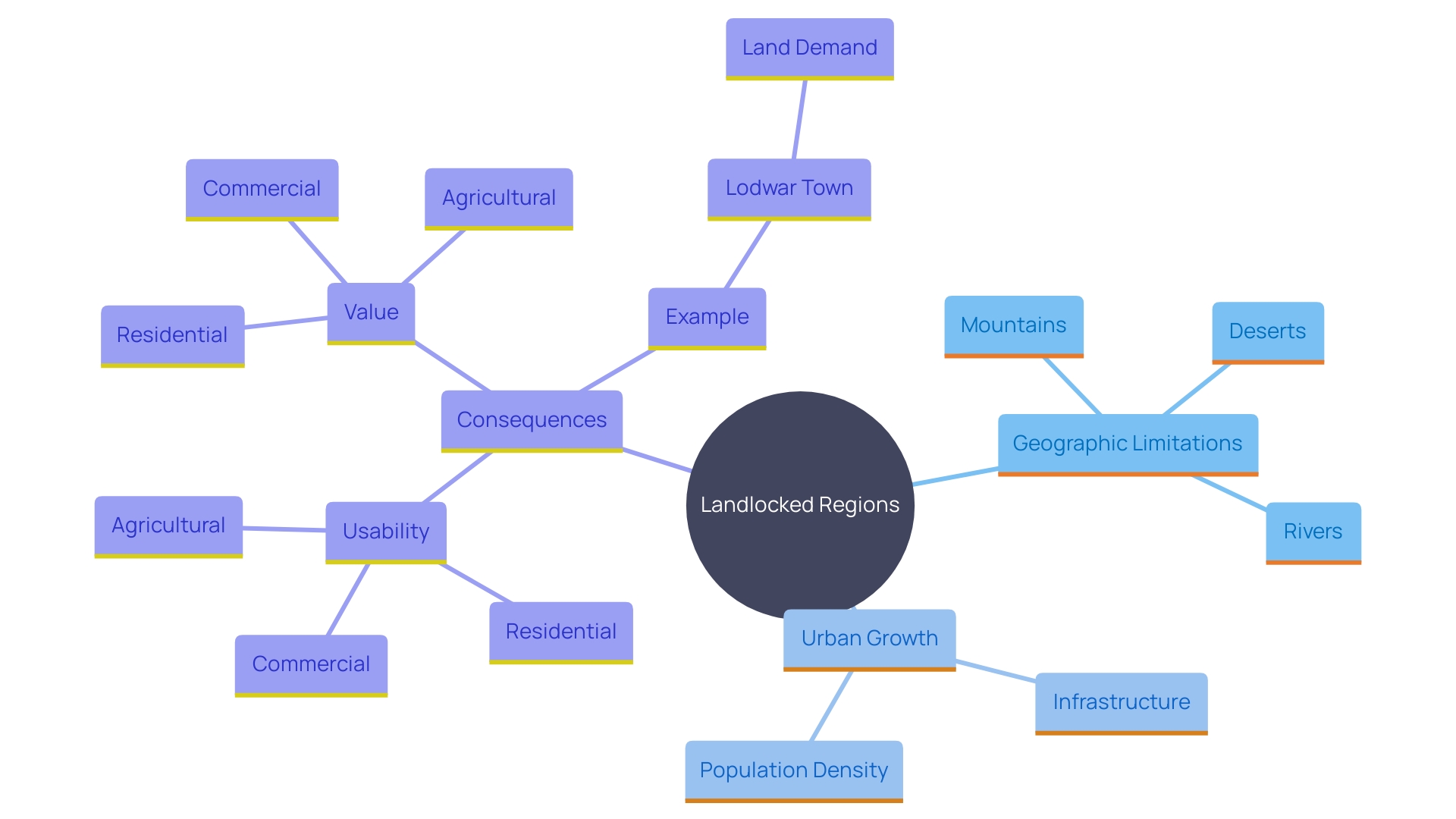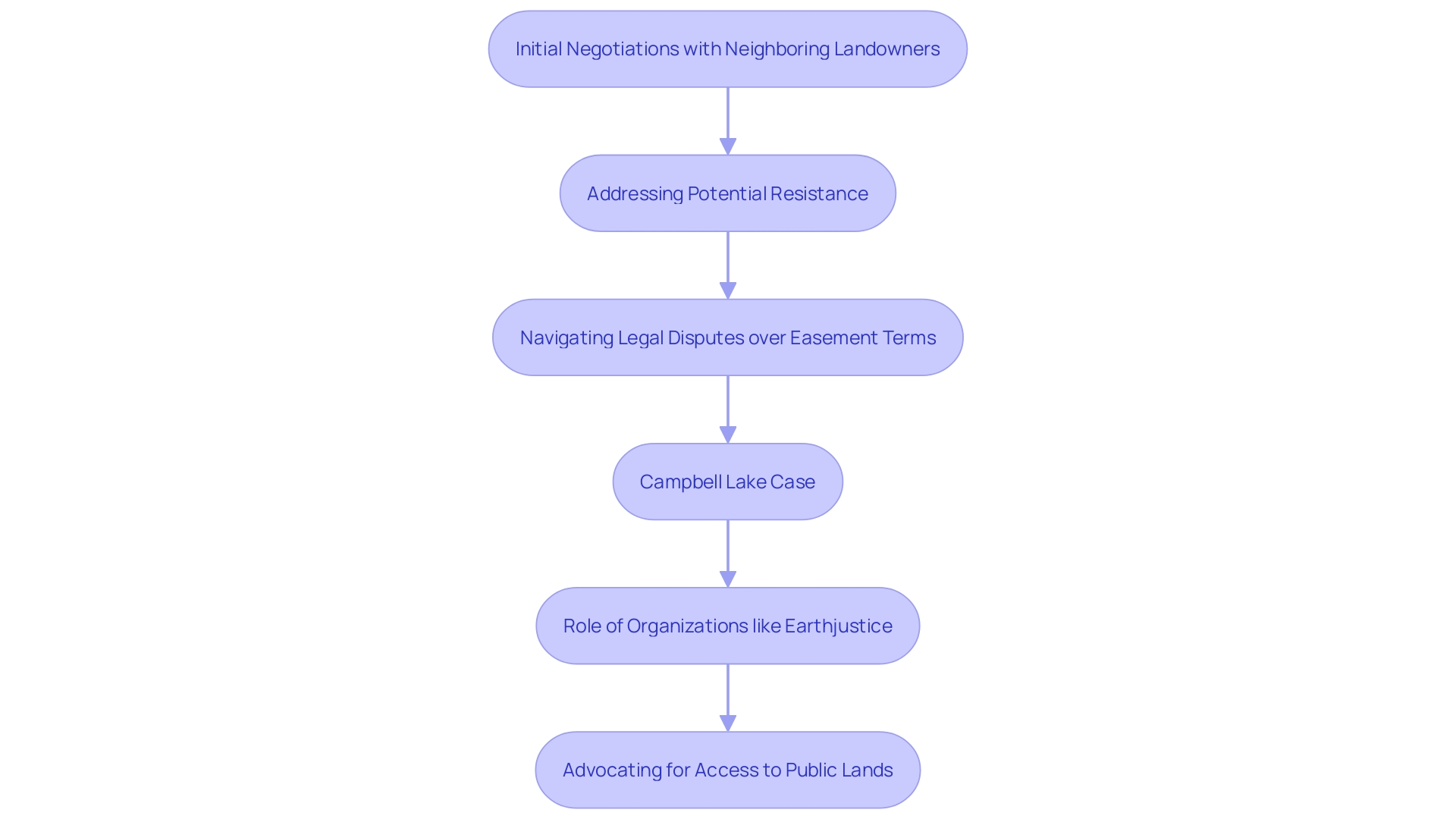Introduction
Landlocked properties, parcels of land without direct access to a public road or highway, present unique challenges and implications for their owners. These properties often arise due to geographic constraints, urban development, or historical land divisions, and their lack of access can significantly impact usability and value. In rapidly growing areas, such as Lodwar Town in Turkana County, the surge in demand for land and resources exacerbates these challenges.
Ensuring legal access is critical, not only for convenience but also for practical use and maintaining market value.
Understanding the right of way and easements is essential for landlocked property owners. Right of way refers to the legal entitlement to traverse another's property, and securing this access is vital. Negotiations with neighboring landowners or legal avenues can help establish this right.
Easements, legal agreements granting access to landlocked parcels, are another solution that balances the needs of property owners with those of neighboring landowners. Despite their importance, securing easements can be fraught with challenges, including resistance from neighboring landowners and potential legal disputes.
Addressing these issues requires a comprehensive understanding of legal and regulatory frameworks to navigate the complexities involved in securing access to landlocked properties.
Defining Landlocked Property and Its Implications
A region that is surrounded by other areas is a piece of terrain that does not have direct connection to a public road or highway, a circumstance frequently arising from geographic limitations, urban growth, or historical divisions of land. This lack of access can severely impact the usability and value of the site, presenting significant challenges for residential, commercial, or agricultural purposes. For instance, in rapidly growing urban areas like Lodwar Town in Turkana County, the demand for land and resources, such as water, has surged due to population growth and industrial activities. This can exacerbate the difficulties faced by landlocked locations. Obtaining legal entry is essential, not merely for ease but for guaranteeing the practical utilization of the asset and preserving its worth in the market.

Understanding Right of Way for Landlocked Properties
Right of way refers to the legal entitlement to cross land owned by another individual or entity. For landlocked locations, obtaining an easement is essential to achieve necessary access. This can be accomplished through negotiations with neighboring landowners or through legal avenues if mutual agreement is not achievable. Comprehending the complexities of access laws is essential for landlocked real estate owners to investigate their choices and to adhere to applicable regulations.
The significance of precedence is highlighted by instances such as the Supreme Court's clarification on zoning regulations and usage limitations, which influence compensation for seized assets. For instance, in Newfoundland's Broad Cove River watershed, groundwater drainage towards the river supports the local water supply, emphasizing the need for clear and fair regulations. These regulations ensure that owners of expropriated property are compensated based on market value when public authorities use regulatory powers to acquire assets.
Moreover, the government's dedication to enhancing entry to nature emphasizes the importance of way of passage. Efforts to ensure every household is within a 15-minute walk of green spaces underscore the necessity of accessible routes. As stated by the Country Land and Business Association (CLA), although millions of acres of land are available without trespassing, there is a need for infrastructure like gates and paths to enhance public entry. This illustrates the wider difficulty of reconciling individual ownership privileges with community entry requirements.
In conclusion, access laws are essential for landlocked landowners to maneuver through legal and regulatory environments efficiently. By comprehending these regulations, landowners can more effectively handle discussions and guarantee their privileges and entry are safeguarded.
Easements: A Solution for Landlocked Property Access
Easements are legal contracts that allow one entity to utilize a section of another entity's land for a particular purpose, such as entry to a landlocked parcel. These agreements can be either permanent or temporary and are often detailed in land deeds. For properties without direct access to water, obtaining an easement is essential for ensuring access and usability of the area, while also honoring the interests of adjacent owners.
A connected idea is the conservation easement, a legally binding agreement between a property owner and a trust or government agency. This kind of easement restricts the use of the area to safeguard its conservation values while permitting the owner to maintain many private ownership rights. Conservation easements are voluntary and can offer significant tax benefits if donated. 'They maintain the property in private ownership, contributing to the local economy without automatically making it publicly accessible.'. Conservation easements are an effective tool for property protection, often at a lower cost to trusts and public agencies, and ensure that areas are preserved for future generations.
As emphasized by numerous specialists and case studies, the significance of adequate territory entry cannot be exaggerated. 'For example, Lewis Winks highlighted the ridiculousness of individuals having to infringe to enter legally traversable zones, indicating issues in the existing system of entry privileges.'. This illustrates the importance of clear and enforceable easement agreements to guarantee lawful and practical entry to land, thereby supporting ownership rights and encouraging responsible land use.
Challenges in Obtaining Easements for Landlocked Properties
Securing an easement for a landlocked property can present various challenges. Property owners may encounter resistance from neighboring landowners who may not wish to provide entry or may impose unfavorable conditions. Legal disputes can also arise over the terms of the easement, such as its duration, scope, and maintenance responsibilities. A significant instance is the Campbell Lake legal case in Alaska, where the state is trying to address entry issues to public waters, emphasizing the complexities involved in establishing easements. According to Natural Resources Commissioner John Boyle, confirming the validity of the easement is a crucial first step in safeguarding Alaskans' entitlement to utilize public waters. Furthermore, entities such as Earthjustice highlight the obstacles encountered by communities in reaching public lands, which can involve perplexing entry situations and disputes with landowners. Understanding these challenges and preparing for potential negotiations or legal proceedings is essential for landlocked property owners seeking access.

Conclusion
Landlocked properties present significant challenges due to their lack of direct access to public roads or highways. This situation can severely affect the usability and market value of such parcels, especially in rapidly developing areas like Lodwar Town in Turkana County. The increasing demand for land and resources emphasizes the need for property owners to secure legal access, which is essential for practical use and maintaining property value.
Understanding the right of way is crucial for landlocked property owners. This legal entitlement allows individuals to traverse another's property, which can be established through negotiations with neighboring landowners or legal avenues when agreements cannot be reached. Familiarity with right of way laws and regulations is vital for navigating the complexities of property access and ensuring that rights are protected.
Easements serve as a practical solution for landlocked properties, allowing access while balancing the rights of neighboring landowners. These legal agreements can be permanent or temporary and are often detailed in property deeds. However, securing easements may pose challenges, including resistance from neighbors and potential legal disputes.
Awareness of these obstacles and preparation for negotiations are essential for property owners seeking to establish access to their land.
In summary, addressing the implications of landlocked properties requires a comprehensive understanding of legal frameworks, negotiation strategies, and the importance of easements and right of way. By navigating these complexities effectively, property owners can enhance the usability and value of their land while ensuring compliance with relevant regulations.




